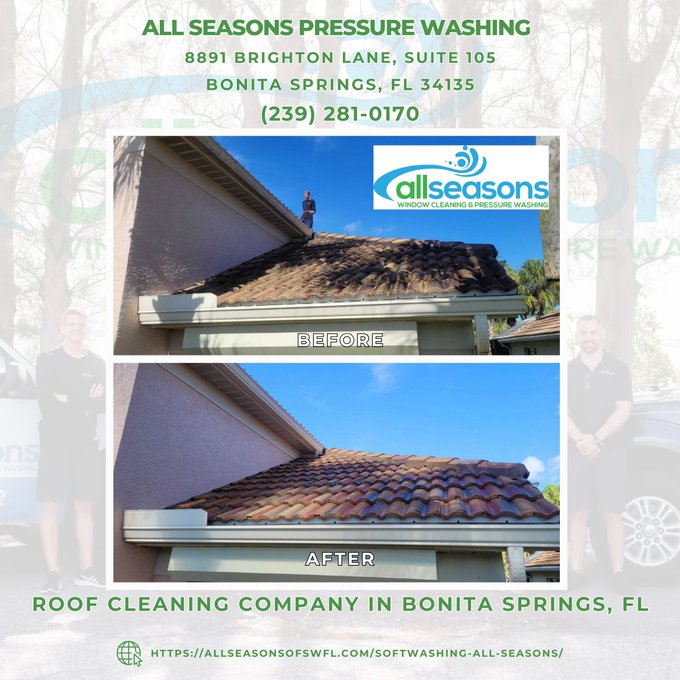Introduction
Owning a home is a significant achievement, but it comes with its fair share of responsibilities. One of the most crucial aspects of homeownership is maintaining your property, especially when it comes to recognizing weather-related damage. Understanding how different weather conditions can impact your home is essential for preserving its value and ensuring the safety of your family. In this comprehensive guide, we'll delve into various types of weather-related damage, how to identify them, and what steps you can take to address these issues effectively.
By the end of this article, you'll have a thorough understanding of how to protect your investment and keep your home in prime condition. So, let's get started!
What Is Weather-Related Damage?
Understanding Weather-Related Damage
Weather-related damage roof cleaning company services refers to any harm caused to your property due to environmental conditions such as rain, snow, wind, hail, and extreme temperatures. These elements can weaken structural components and lead to issues like leaks, rot, or even foundational problems if left unaddressed.
Common Types of Weather-Related Damage
Roof Damage: Extreme winds can lift shingles; heavy snow may cause sagging or collapse. Water Damage: Heavy rains can result in leaks that damage ceilings and walls. Foundation Issues: Flooding or prolonged moisture exposure can weaken foundations. Exterior Damage: Wind and hail can chip paint and damage siding.Recognizing Roof Damage from Weather Events
Signs Your Roof Needs Attention
- Missing or damaged shingles Dark spots or stains on the ceiling Sagging areas on the roof surface Granules from shingles in gutters
Is Roof Cleaning a Good Idea?
Absolutely! Cleaning your roof regularly helps maintain its integrity and appearance. It prevents the buildup of moss, algae, and debris that can trap moisture and lead to deterioration over time.
What Is the Best Method of Roof Cleaning?
There are several methods available for cleaning roofs:
Soft Washing: This technique uses low-pressure water combined with specialized cleaning solutions. Pressure Washing: While effective at removing dirt, it can also strip away protective granules from shingles. Chemical Treatments: Certain chemicals are designed specifically for killing algae and moss without damaging roofing materials.How Often Should Your Roof Be Cleaned?
Typically, it's advisable to clean your roof every 1-3 years depending on the climate you live in and the surrounding vegetation.
DIY Roof Cleaning vs Hiring Professionals
Can I Clean My Roof Myself?
Yes! However, it requires careful planning and safety precautions. Always use non-slip footwear and consider using a harness when working at heights.
Should I Clean My Own Roof?
If you're comfortable with heights and equipped with the right tools, DIY cleaning can save money. Otherwise, hiring professionals ensures safety and effectiveness.
The Cost of Professional Roof Cleaning Services
How Much Does It Cost to Coat a Roof?
The cost varies widely based on roof size and material but typically ranges from $1-$3 per square foot for coatings.
What Is Roof Cleaning Called?
Roof cleaning is often referred to as "roof maintenance" or "roof restoration," depending on whether you're performing routine cleaning or addressing more severe issues.
Walking on Your Roof Safely
Can I Walk on My Roof to Clean It?
While it's possible to walk on your roof during cleaning tasks, it's essential to do so cautiously—preferably only if you have experience with roof work.
Making Your Roof Look New Again
How to Make Your Roof Look New?
To rejuvenate an aging roof:
- Conduct thorough cleaning. Apply protective coatings. Replace any damaged shingles.
Consequences of Not Cleaning Your Roof Regularly
What Happens If You Don't Clean Your Roof?
Neglecting regular cleaning will accumulate dirt and organic growths like moss or algae that trap moisture against your roofing materials leading to:
Premature wear Increased risk of leaks Higher energy costs due to insulation lossSoft Wash Roof Cleaning Explained
What Is Soft Wash Roof Cleaning?
Soft wash roof cleaning involves using low-pressure water along with eco-friendly detergents that eliminate contaminants without damaging roofing materials—a great option for delicate roofs.
Does Soft Wash Extend the Life of a Roof?
Yes! By removing harmful growths that retain moisture against roofing materials, soft washing helps prolong the life expectancy of your roof substantially.
Cleaning Duration & Effectiveness
How Long Does It Take To Clean A Roof?
Typically about 2-4 hours depending on size & method used—soft washing might take longer due to drying time but offers lasting results!
Does Rinsing After Washing Matter?
Yes! It's essential as it removes residual chemicals from surfaces which could potentially harm landscaping below!
FAQs About Weather-Related Damage
How long does soft washing last?
Soft washing usually lasts anywhere from 3–5 years before needing another treatment based on environmental factors like proximity trees!
Is steam cleaning my roof safe?
Steam cleaning should be approached carefully; high heat could damage some roofing materials but generally safer compared traditional pressure methods!
Should I spray my roof after washing it?
Yes! Rinsing helps ensure no chemicals remain behind which could harm vegetation!
What chemical is used for roof cleaning?
Sodium hypochlorite (bleach) mixed with water is commonly used alongside surfactants added for better adherence against surfaces!
Can pressure washing cause leaks in roofs?
Absolutely—it’s crucial not directed forcefully onto seams or joints as this could lead unwanted infiltration issues later down line!
6 . Why is my roof turning green???
Algae growth often appears greenish color—this indicates buildup moisture trapped under debris requiring immediate attention prevent further deterioration!
Conclusion
In Roof Washing summary, understanding weather-related damage is vital for any homeowner wanting longevity out their properties’ lifespan while maximizing resale values! Regularly inspecting roofs alongside following recommended maintenance practices ensures problems don’t escalate costly repairs down road ahead preventing premature degradation all-around! Whether you choose DIY efforts hire professionals rest assured knowing knowledge gained through “A Homeowner’s Guide To Recognizing Weather Related Damage” equips empowered decision-making ultimately protecting investments made within homes we cherish deeply every day!
